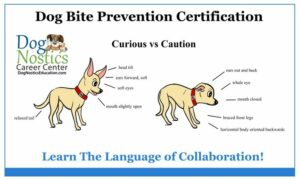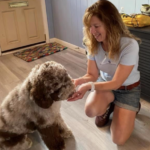Pets and Their People Blog
Dog Bite Prevention Week!
As a certified dog bite prevention educator, I can tell you that dog bites do not just happen out of the blue as many seem to believe.
Behavior is Communication
All behavior is designed to access something, avoid, or escape something.
In applied behavior analysis we talk about behavior being anything we can observe that can be measured. The problem, when it comes to dog behavior, is a lack of human comprehension. Our understanding is limited and we miss the details, the communication signals.
If humans could ask WHY a behavior (a lunge or a growl for instance) is happening and look below the tip of the iceberg, they would see that the behavior of a dog shows us how the dog is feeling inside.
How many of us would be ok with a stranger coming over to scratch your head? I may become ‘reactive’ if you did that to me!

Dogs try desperately to say that they are uncomfortable with an approach, a hug, a stranger. They try to say, “Please don’t. Stay away. I am not comfortable with this.”
Too often, they are ignored. Dogs are labeled as unpredictable, alpha, dominant, aggressive – when in reality they were telling us over and over how they were feeling. From their perspective, no one was listening.
The consequences of this scenario are misery for the dog, a bite as a last resort and a label, and possibly even loss of life for that dog.
We as humans need to do a better job of learning and deciphering what our 4-legged loved ones are saying.
Tips to Help Prevent Dog Bites
Humans should always have respect for the dog in front of them. Communication is social behavior that goes both ways; the dog’s feelings should always be considered. With that in mind, here are some dog bite prevention tips:
- To the best of your ability, your dog should not be put into a situation which is not comfortable for him.
- If your dog is not feeling ok and safe in a place or situation, get him out of it.
- A bark and lunge need to be heard. A whale eye is not as obvious but also needs to be listened to.
- Reach out to a qualified kind human who understands dog behavior to learn how to help your dog feel better about their world.
- Until then and even after, management can always be put into place as a first line of safety and happiness for all.
- Learn about dog appeasement behaviors. Guess what? Not all dogs who roll onto their backs are asking for a belly rub. Some are saying that they mean you no harm and please let them be. How can you tell? You must look at the whole picture, the rest of their body language as well as the situation.
- Never let a child run over to a dog who does not know them. Never let a child run over to a dog unless you can guarantee that this dog is absolutely ok with it. And guess what? There are no guarantees.
Kindness Always for the Win
Many dogs who are treated in an unethical manner may feel like they have to get the person causing the pain (as they see it, the trigger) before it gets them first. Many learn that triggers (scary things) are indeed as scary and awful as they suspected because now when the dog tries to say, “stay away” using canine communication, they are shocked or have pain from the jerk of a choke or prong collar. This cycle causes terrible fallout. Trying to teach a dog a lesson using pain, teaches the dog that they were right to be afraid in the first place and violates trust.
No one can learn and move forward in a good way if they do not trust that they are safe and heard.
If we listen, if they feel heard, we can make our world a better place for dogs. There will be far fewer bites and far happier dogs.
Never be afraid to be your dog’s advocate. You are all they have.
About the Author

Debbie Sheridan is a proud Pet Professional Guild member, sitting on the Advocacy and the Inclusivity committees. She is a certified Family Dog Mediator, applied animal behavior consultant, an end-of-life doula for companion animals and has completed Michael Shikashio’s Aggression in Dogs Master Course. Debbie also recently became a certified Dog Bite Prevention Educator. She works primarily with fearful and anxious dogs who need extra understanding. You can find her at her Debbie’s 4 Dogs website or Facebook page, where she promotes kindness always for the win.

